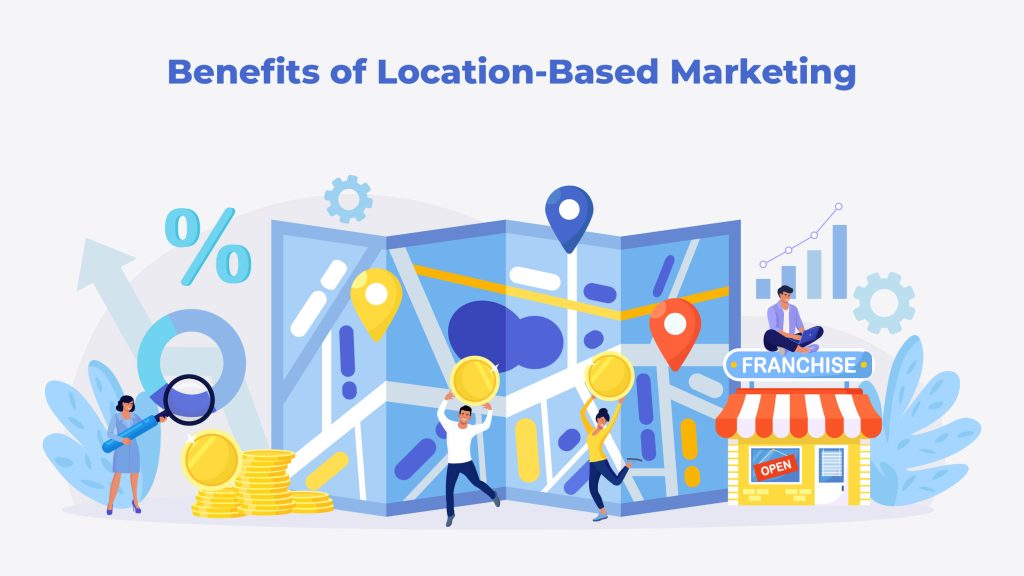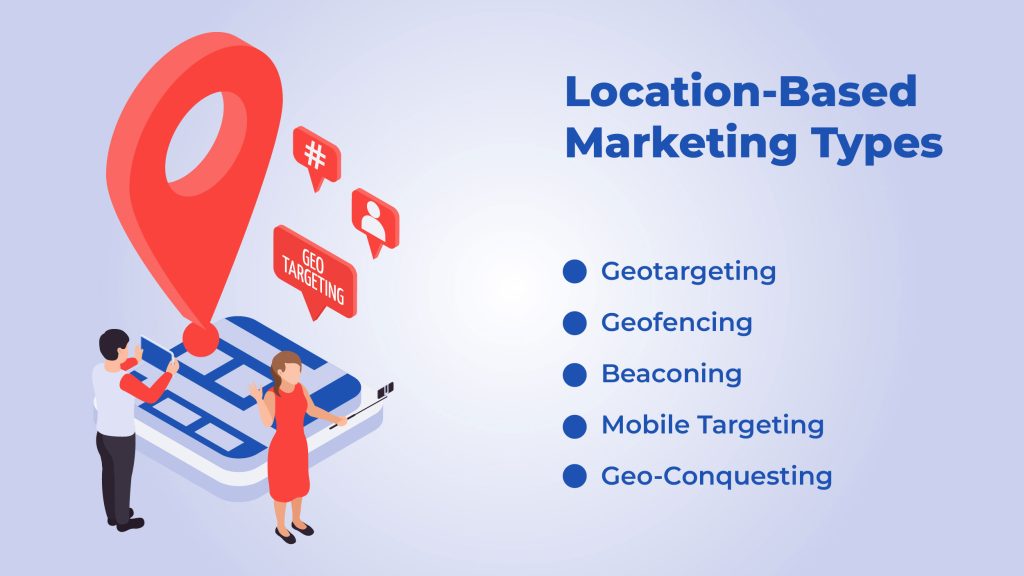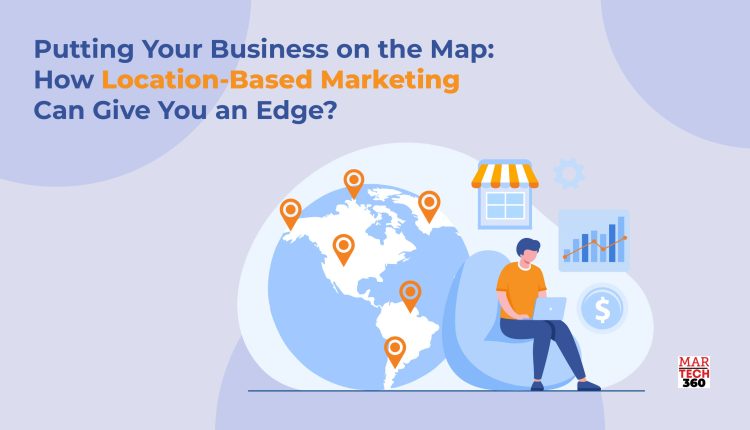Have you ever walked into a store and received a notification on your phone about a sale or promotion? Or maybe you’ve seen an ad for a nearby restaurant pop up while scrolling through social media? Well, my friends, that’s location-based marketing in action!
In a world where we’re constantly glued to our phones and always on the go, businesses are finding new and innovative ways to reach their target audience. And that’s where location-based marketing comes in – by using technology to deliver personalized and relevant messages to consumers based on their location.
So whether you’re a marketer looking to up your game or just someone curious about the latest trends in the industry, stick around! We’re about to dive into the exciting world of location-based marketing and how it’s changing the game for businesses of all kinds.
What is Location-Based Marketing?
Customer location information from mobile devices is used in location-based marketing to inform customers about local businesses. You can send highly customized communications to customers based on their context by using their location. For instance, when a consumer is near your store, you can send them notifications about deals to entice them to go there. Location-based marketing, in essence, links the physical location of the customer with the digital world of mobile devices.
You are not limited to focusing on customers close to your store when using location-based marketing. For instance, when a customer is in an area where they frequently use their phones or when they are close to rival businesses. By connecting brands with customers who have been to or are going to their store or another particular location, location-based marketing will increase traffic to the business.
Benefits of Location-Based Marketing
Key benefits of location-based marketing that help businesses of all sizes thrive are mentioned below:

1. Customized and Personalized Marketing Strategies for Increased Revenue
Despite the fact that businesses frequently try to make their marketing and advertising campaigns as appealing as possible, the statistics suggest otherwise. A mobile marketing survey found that 40% of customers who get texts from brands believe the contact was neither relevant nor useful. A game-changer in this situation could be location-based marketing.
By utilizing the location data that customers submit, location marketing ups the ante in the marketing game by ensuring that customers are only ever received pertinent content. There are various options for location-based marketing in e-commerce, while Google Local Inventory Ads is probably the most popular example.
2. Drive Instant Foot Traffic to Bring More People to Your Doorstep
By notifying nearby users of an offer and luring them with a promotion, location-based marketing can increase foot traffic for local businesses like restaurants and retail shops.
3. Elevate Your User Experience to Craft a Seamless Journey
You can improve the user experience by reaching out to them at the precise moment when they are most likely to require your services.
Types of Location-Based Marketing
Today, it seems like everything is online, including watches, cars, and phones. Location data can be incorporated into marketing campaigns in a variety of ways, including the following:
1. Geotargeting
Geotargeting is used to locate customers so that personalized messages can be sent to them based on their location. Customers who have given their consent to allow an app access to their location may receive push notifications or messages in the app based on their location or how close they are to a store.

● Examples
Google search results are a well-known example of geotargeting. When a user searches for “coffee shops,” Google will use location data based on the IP address of the device being used to do the search to return results for coffee shops nearby.
Uber uses geotargeting, which is another typical example of it. A notification regarding available vehicles in the destination city will appear when a user is traveling and lands in a new city.
2. Geofencing
Geofencing is the process of establishing a boundary inside a certain area. Target audiences will turn into active targets of the marketing plan once they cross that line. This could imply that they get content, offers, or other messages from the company. A popular shopping center where the business has a store is one example of a boundary.
● Examples
Retailers can use geofencing to target customers who are close to their stores and attract them to visit. For instance, a customer who has been reviewing a product online can receive a notification when that particular product is available at a nearby retailer.
3. Beaconing
Beacons are electronic devices that can connect to specific applications that are running within their range using Bluetooth or WiFi. To target existing customers in a limited geographic area, beacons are effective.
● Examples
To send offers to customers as they browse, retailers can deploy beacons in the aisles all around the store. For instance, a grocery store may utilize beacons to identify customers who are on the ice cream aisle and subsequently send them an offer for ice cream cones.
4. Mobile Targeting
When advertisers target customers with ads on their mobile devices, this is known as mobile targeting. The goal of marketers is to make their ads context-specific, which might be based on time, device, or location because consumers normally want to avoid advertising.
● Examples
Location-based social media advertising can assist promote visits to a nearby shop, restaurant, or event.
5. Geo-Conquesting
Location data is used in geo-conquesting to divert customers away from competitor places. Car lots, for instance, can erect a wall around a lot belonging to a competitor. A user-facing offer that encourages them to visit the other dealer will be sent to them when a target customer enters that zone.
● Examples
Burger King successfully employed geo-conquesting in order to draw potential Mcdonald’s consumers back to their own eateries. The Burger King app has been suggested for download by customers. The Burger King app delivered a promotion for a 1-cent whopper and directed users to the closest store when they were 600 feet from a McDonald’s.
The Journey Continues: Final Reflections on Location-Based Marketing
And there you have it. We’ve explored the ins and outs of location-based marketing along with the importance of location-based marketing and how it’s revolutionizing the way businesses connect with their customers.
From geo-targeted ads to in-store notifications, location-based marketing offers endless possibilities for businesses to engage with their audience in a more personalized and effective way. And as technology continues to evolve, we can only expect this trend to grow even bigger.
So whether you’re a small business owner or a marketing expert, don’t sleep on the power of location-based marketing. It’s time to start thinking outside the box and taking advantage of all the tools at your disposal. Who knows, maybe the next time you’re out and about, you’ll receive a message from your favorite store or restaurant inviting you in for a special deal!


Comments are closed.